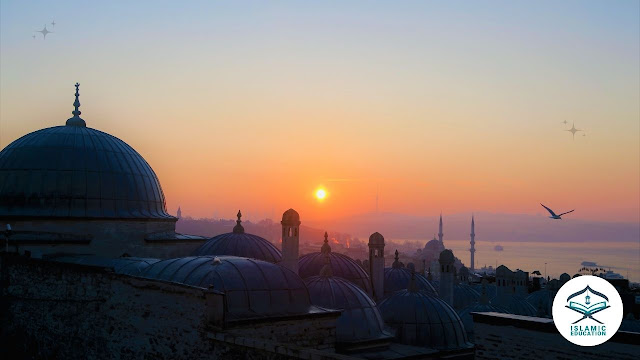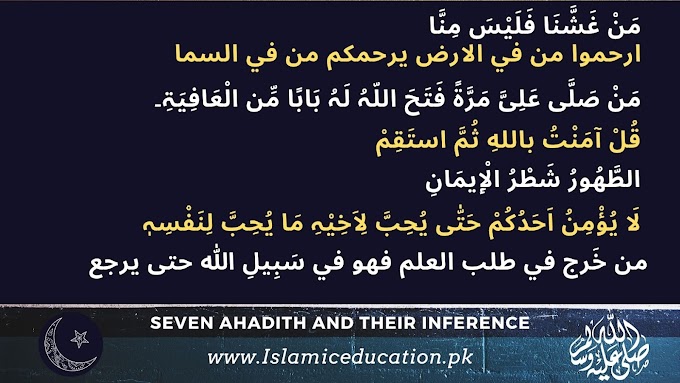Umar's Caliphate era
Umar
succeeded Abu Bakr as the second Caliph in 634/13 AH, and continued the mission
of the first Caliph till his martyrdom in 644/23 A.H. Hazrat Abu Bakr himself nominated
him as the Caliph. His Caliphate is noted by internal consolidation of the
Muslim empire, accompanied by the expansion of Islamic rule by conquering the
lands under the Persian and Byzantine empires, and they included Iraq, Persia,
Jerusalem and Egypt. It is surely the golden period in Muslim history after the
death of the Holy Prophet Hazrat Muhammad ﷺ
The
conquest of Iraq had been started during Abu Bakr's Caliphate when the Muslim
forces had reached Chaldaea and Hira by April 633 under Hazrat Khalid bin Walid
and Al-Muthanna. Khalid then had moved to Syria leaving Muthanna in Iraq.
Seeing this, the Persian prince sent a 10,000 strong army under the command of
Hormuz against the Arab forces. Umar also sent reinforcement under Abu Ubayd
al-Thaqifi. The combined Muslim forces defeated the Persians at Namaraq in
October 634.
After a
few days Abu Ubayd defeated another Persian force at Kaksar after crossing the
Euphrates. The Persian supreme command then sent a huge force under Bahman. The
two armies fought a fierce battle, the Battle of Bridge, in which the Persians
used several war elephants. Abu Ubayd crossed over the Euphrates, and in the
subsequent battle the Muslim army suffered great losses against the mighty
Persian army.
The
bridge that had been destroyed by the Persians was rebuilt as al-Muthanna took
the command after Abu Ubayd had been killed. Hardly 3,000 out of 10,000 Muslims
were able to cross the bridge. Al-Muthanna, who was seriously injured,
reorganized the army, and in November 634 defeated a Persian army under Mahran
in the battle of Buwayb.
By
December 634, the last Sassanid King Yazdigard III had been brought to power,
who infused a new spirit among the Persians, and they rose against the Arabs to
recapture most of the territories including Hira and Chaldaea.
At this,
Al-Muthanna just before his death in April 635, wrote to Sa'd bin Abi Waqas to
take action against the Persians, and follow the vital strategy of remaining on
the Arab or desert side of the river so that in case of retreat the Arabs could
fall back on the desert. Accordingly, Sa'd reached a place, Qadsiya near the
Great Canal of Sapore. He had a 20,000 strong army under him. He remained
within the confines of the desert as advised by Muthanna and the Caliph The
Persian army of 120,000 troops also reached the other side of the Euphrates
under Rustam. Both the armies waited for several weeks and Sa'd sent about 20
envoys to the King with the usual 3 options: accept Islam, or pay the Jiziya or
get ready for the war. The king opted for the 3rd, war. The battle of Qadriya,
thus began in 635. Rustam crossed the river and began the fierce battle that
continued for more than 3 days. On the second day, the Arabs received
reinforcement from Syria under Al-Qaqa. Al-Qaqa killed Bahman, the victor of
the Battle of Bridge on the second day. On the 4th day the Arabs reached the
royal pavilion and exposed the throne of the Persian commander-in-chief,
Rustam. A stormy wind also blew and Rustam tried to flee but was killed by
Habib bin Alqamah. This became the turning point, and the Arabs got victory.
The Muslim losses were 8500 dead against a four-time loss of Persians. A huge
and handsome booty was captured by the Muslims in this decisive battle.
Sa'd
advanced to the Persian capital Al-Madam with an army of 50,000. He laid a
siege for several days and the King Yazdigard began to shift his wealth and
family to Hulwan, a fortress about 100 miles north of Al-Medain. On this, Sa'd
took a vital decision, and asked his army to cross the river Tigris. They faced
mild resistance and finally captured Al-Madain with a huge booty of around 9
billion dirhams. The King after fleeing to Hulwan, gathered his army at Jalula
that was defeated by a Muslim army under al-Qaqa and Hashim bin Utba. Ualula
and Hulwan were captured, and the King fled to the northern city of ar-Ray.
In the
meantime, the Persian, Roman and Christian Arab tribes combined forces in upper
Iraq near Tekrit. Sa'ad dispatched an army that defeated the joint forces and
even captured Mosul, thus bringing the whole of Mesopotamia under the Muslim
control. Umar finally sent troops under Utba bin Ghazwan to capture Ubalha at
the head of the Persian Gulf to consolidate the Muslim control over Persia.
Umar then abandoned any further conquests. Sa'd, on Umar's advice, founded the
new cities of Kufa and Basra near Madain for the Muslim armies and the
families.
As for
conquests in Syria, the Muslim forces were advancing rapidly in Syria when Umar
became Caliph. The Byzantine Emperor Heracleus had fled from Emessa to Antioch.
From there, he organized his army against the Muslim forces. Khalid bin Walid
sprang his forces accordingly in three directions. He dispatched Shurahbil to
Jordan and Amr bin al-A's to Palestine, while he himself advanced towards
Damascus with Abu Ubaida and Yezid. Khalid began his victorious march from
Ajnadain in March 635 and after capturing Bosra and Fihl, reached Damascus in
two weeks. He laid siege to Damascus till September 635, and finally entered
the city as victor and signed on a peace treaty. The Emperor, however, had fled
from the city and collected a huge army, and put it under his brother Theodorus
at Antioch. These forces were defeated in August 636/15 AH, in the Battle of
Yarmouk.
After
this, Abu Ubayda replaced Khalid as the Chief Commander of the Muslim Abu
Ubayda recaptured Damascus decisively in September 636. Other important towns
in Syria on the coast of the Mediterranean Sea were also captured. Only
Jerusalem, Ramallah and Caesarea continued to resist, and Jerusalem was also
taken in a peaceful manner on the request of the Patriarch Sophronius. Umar
himself met Sophronius and signed a peace treaty under which full religious
liberty was given to the citizens of Jerusalem, on the condition of paying Jiziya.
Sanctity of the Church, of Resurrection and other churches was also guaranteed.
After this Umar left for Medina, and Amr bin al-A's reduced the other towns in
Palestine. army.
Finally,
Egypt was conquered in 640/19-20 by Amr bin Al-A's, who had to persuade Umar
with great difficulty for this. Egypt could be used by the Byzantines as the
naval base to launch operations against the Arabs. Then the agricultural
produce of Egypt could well feed the growing Arab population. So, Egypt was
conquered by the strategic policy of Amr bin Al-A's by the end of 639, and
start of 640 AD. By April 641 Babylon was also captured, and the new city of
Fustat was founded in 624 on the eastern bank of the Nile.
During
the same period (637-643 AD) Umar completed the final capture and subjugation
of Persia. Starting from south Persia, Khuzistan was conquered in 638, and the
Battle of Nehawand that was fought in 642, the important towns of the Persia
proper fell to the Muslims and they included ar-Ray, Faris, Sistan, Kirman, Makran
and Azerbaijan. This also marked the end of the Sassanid Dynasty in Persia. The
last important province, Khurasan, was captured during early years of the 3rdCaliph Uthman.
Umar
appointed able and efficient governors in all these conquered territories under
his wonderful administrative system. Umar was finally killed by Firoz, a
Persian slave on 3rd November 644 while offering the morning prayer.
He was
buried alongside the Holy Prophet Hazrat Muhammad ﷺ
and Hazrat Abu Bakr in Medina. Umar left behind him an effective system of
administration throughout his empire by appointing extremely efficient
governors and Qadis and other state officials. His caliphate brought a great
deal of prosperity and strength for the Muslims.
Conclusion:
Umar bin
Khattab was among the early converts to Islam and his conversion was quite
morale boosting for the Muslims. He devoted his life and energy to the cause of
Islam, and fully and openly supported the Holy Prophet ﷺ throughout the noble prophetic mission in Makka
and Medina. He migrated to Medina for Islam and played important role in the
early settlements at Medina. He performed valuable services in the major
battles fought against the enemies of Islam.
He placed
about half of all his wealth at the disposal of the Holy Prophet Hazrat Muhammad ﷺ on the occasion of the Tabuk expedition. He played
a vital role in the election of Abu Bakr, as the first caliph amidst a great
deal of disorder and uncertainty after the Holy Prophet ﷺ
death. His own caliphate was the most successful, and glorious period of early
Islamic history. He not only consolidated the new Muslim empire by establishing
an effective system of governance, but also expanded its borders by capturing
Persia, Syria, Palestine, Jerusalem and the fertile land of Egypt. He himself
led a simple and pious life and conducted patrolling at night to ensure the
peace and comfort of his people. He laid down the foundation of a lasting
administrative system by dividing the empire into provinces and by placing then
under able administrators, governors and Qadis (judges)








